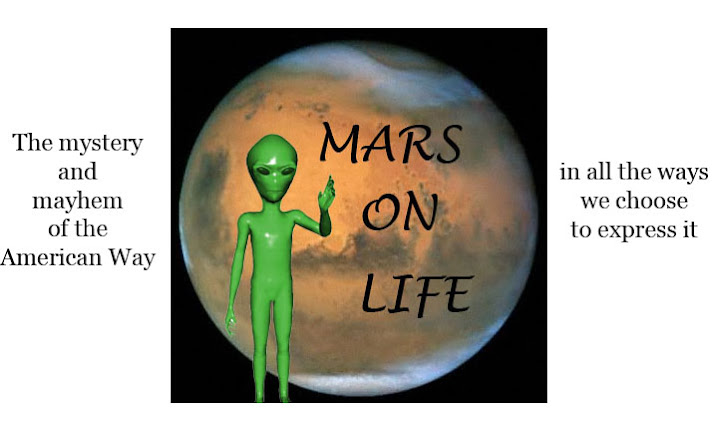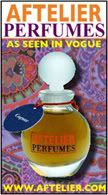There are three ways to look at Bottega Veneta's Fall 2008 men's collection. The second way is straightforward and therefore easy to comprehend. The first and third ways stir some uncomfortable emotions and require at least a passing familiarity with the works of Eugene O'Neill.
O'Neill, in my opinion America's foremost Depression-era dramatist, was a bit of a crepehanger. His were fringe characters who tried and failed to identify and belong. Although not without hope, they were guided by impossible beacons. Well aware of the gaping maw between rich and poor, certain characters discovered that they did not even belong to what they considered their own kind. Not only would these characters not know primacy, they would not know survival.
opinion America's foremost Depression-era dramatist, was a bit of a crepehanger. His were fringe characters who tried and failed to identify and belong. Although not without hope, they were guided by impossible beacons. Well aware of the gaping maw between rich and poor, certain characters discovered that they did not even belong to what they considered their own kind. Not only would these characters not know primacy, they would not know survival.
In The Hairy Ape (1922), a ship's stoker represents the common manual laborer. It is he who feeds the fires that keep the pistons moving the great liner across the ocean. Above him, the wealthy are not aware of his existence. More than mere layers of steel and coarse Brooklynese separates him from the passengers. The stoker--Yank--is proud of his raw strength and physical abilities. The job is dirty, tough, and full of danger. O'Neill describes the stokers' posture as having "the inhuman attitudes of caged gorillas." The laborers are beasts wearing the flesh of men. Emotionally, however, Yank is heir to a school of thought that says the rich are feeble and craven while the working man is strong and courageous. In Yank's dominion, brute power trumps a bank statement.
During the journey, the daughter of a wealthy industrialist visits the ship's bowels. There, she witnesses a foul-mouthed diatribe that Yank directs at an unseen engineer who blows a whistle to signal the men back to labor. "Toin off dat whistle! Come down outa dere, yuh yellow, brass-buttoned, Belfast bum, yuh! Come down and I'll knock yer brains out! Yuh lousy, stinkin', yellow mut of a Catholic-moiderin' bastard! Come down and I'll moider yuh! Pullin' dat whistle on me, huh? I'll show yuh! I'll crash yer skull in! I'll drive yer teet' down yer troat! I'll slam yer nose trou de back of yer head! I'll cut yer guts out for a nickel, yuh lousy boob, yuh dirty, crummy, muck-eatin' son of a-- "
Mildred, the daughter, is so overcome by this crass verbalization that she nearly faints and must be escorted away. Repulsed, she has called Yank a "filthy beast." The play revolves around this incident; Mildred's dismissive statement has told Yank that he is inhuman and no better than an animal.
Degraded, Yank leaves the ship and attacks some society members who are on their way out of church. The battle lines between class strata are now openly drawn. Yank is arrested and jailed for a month. When he is freed, he believes he has found acceptance in a labor union. His obvious hostilities then unsettle the union members with whom he might have expected the welcome of common ground. Yank is adrift, alienated by his own brutality and antagonisms. Even among brutes, he is outstanding.
Bottega Veneta's fall collection might be metaphoric: Now more than ever one is aware of the great class distinction between labor and leisure, between wealthy and Wobblies*. Anyone who has been forced by economics to vacate or downgrade is familiar with the predicament. The collection contains workmen's coveralls and painter's pants worn under thick jackets and suits colored a concrete, urban grey. The drab, non-individualistic color allusively recalls the idea of socialist or prison uniforms. Pants have the volume to accommodate another layer of clothing underneath, as if to say that the man inside will be exposed to the outdoors in the course of his daily labors. In one ensemble, a tough-looking trouser zipper has no fly covering, a nicety reserved for gentlemen. The glint of a toothy silver zipper against black fabric exposes the crude necessity of quick biological function; these men do not have private office bathroom s but must instead piss over a railing.
s but must instead piss over a railing.
At the opposite end of the collection are the dinner suits and one slimline-jacket tux that the common man likely will never require. On his wedding day he will rent a cheap polyester tux in a New Jersey mall; he will be buried in his one good suit, bought on sale some 20 years prior and featuring an awkward print. In between, he gaffes by wearing a worker's cap with a blazer. There is also lots of denim. This denim is of a tonality and finish akin to the original Levi Strauss dungarees, the pants worn by linemen and railroad workers as they connected the West to the East. It is a reminder that blue jeans were once dungarees (alt. dunjarees), the workpants of the working class. It wasn't until the 1960s that dungarees became "jeans" and were seen as acceptable leisure apparel.
Or we might take the vantage point that the collection represents the diversity of occupation of today's male, rather than the gulf between, and that by showing both coverall and tux there is no exclusivity and elitism. To take this view dispenses with angst and contradiction. Traditional male occupations are then not separated but are brought together, each one equal to the other. This, then, is the new economic reality. Timing, rather than skill, determines outcome.
A third idea refers back to O'Neill and might be called "The Making of a Gentleman." In this scenario, the laborer is slowly transformed into the elegant gentleman, passing through denim  and Young Turk suiting on the way. He is an O'Neill protagonist who is not crushed to death in the embrace of an ape. There is a clearly stated progression and an anticipation that hard work may reap reward. Our new protagonist does not fall victim to despair and his diction is improved in night school. He is now ready to meet the family. Aha! you say, he cleans up well. This is populism in action: Hope has come to fruition. In a lottery ticket or being hit by a city bus, the latter probably the likelier.
and Young Turk suiting on the way. He is an O'Neill protagonist who is not crushed to death in the embrace of an ape. There is a clearly stated progression and an anticipation that hard work may reap reward. Our new protagonist does not fall victim to despair and his diction is improved in night school. He is now ready to meet the family. Aha! you say, he cleans up well. This is populism in action: Hope has come to fruition. In a lottery ticket or being hit by a city bus, the latter probably the likelier.
*Industrial Workers of the World, a union that posited that "the working class and the employing class have nothing in common." Famous for the Seattle General Strike of 1919.
All images: Style.com
Sunday, January 20, 2008
Nowhere You Hang Your Hat Is Home: Bottega Veneta
Labels:
Bottega Veneta Fall 2008 Men's
Subscribe to:
Post Comments (Atom)









9 comments:
I've never read anything by Eugene O'Neill, but I must go rectify that..
BFH, I always like to read chronologically, but since the body of O'Neill's work is so large I'd recommend you start with the most famous plays:
Anna Christie
The Iceman Cometh
Long Day's Journey into Night
A Moon for the Misbegotten
There are excellent compendia available with all the plays, and some you can read on line. The Hairy Ape is available here:
http://www.theatrehistory.com/plays/hairyape001.html
I think your final conclusion says it all that the man doesn't need to define his own wealth status with his clothes and rather he can play down or play up his occupation with style. Not a great collection though for me generally speaking.
Thanks, Suzanna!
i love your review - it's fantastic when one not only catches the officially printed influences and imagery given to the collection, but also can make some references, find his own way to interpret the designer's plot of the story if you will.
in the context of mens collections. watching all this was an amazing and quite weird experience. so much things i loved and wouldn't mind to own (though that's not the point for me), yet there was something else to wonder.
first, how long will it take mens fashion to make some steps forward from the uniformity as the major aesthetic every single designer seems to be obsessed with. all the dress CODES possible (from nautical to tuxedos to maharajahs to gay gypsies to alladins and mc hummer) were presented on the catwalks yet something hardly looked modern and forward-thinking then raf simons and... calvin klein. lanvin was amazing being extremely ironic and young and not taking himself too serious. yet...
is mens fashion about making a statement? i'm pretty much sure it's not. is it about costumes? nope (yet watching the latest collections by yamamoto, cdg makes me think mens fashion failed to create something more valuable than just that). still. why almost every designer tends to see only two paths - being extremely conservative (read boring) or totally obsessed with decorating man, making him look like a walking manifesto (which is pretty pathetic). where's the clothes which... make men better?
i loved much of what i've seen. yet the whole picture didn't suggest anything new. was there chic? yes. was there some innovation? yeps. was it beautiful-rubbish-amazing-senseless-elegant-dud-hysteric? yes, yes and yes. was there something that can change A MAN and his world? i reckon. which is pretty sad.
mens shows are far less narrative (and suggestive in any artistic way) than women's. who knows. maybe men do look more cartoon-ish and cliche then women? poor us then.
DBP, this is an incredibly provocative response, and one I agree with wholeheartedly.
I especially liked the part about "walking manifesto"; certainly we saw that occuring in the punk/not punk/New Wave Cabaret of CDG (as aside, why must men's makeup assume a Weimar look?). Your point about there being only two possibilities is spot on. However, I did think some of the less "creative" and more literal looks had beautiful tailoring and material.
Also, I thought there was some huge build-up to Raf, and then there is a sense of slight disappointment there that no one really wants to address. He is carrying a tremendous burden to reinform and rewrite men's fashion.
interestin debate review here !!! got so much to learn !!
I would usually caution against attributing too much meaning to fashion, except this was so much fun. I knew my English degree was good for something!
That collection was ripe for literary allusion. Sometimes it is inescapable. I was especially taken with the many critical responses and wrote the essay to address them.
Thomas, I wish I could use my strange little degree.
Post a Comment